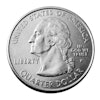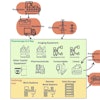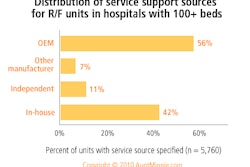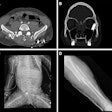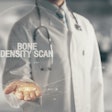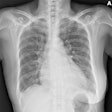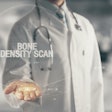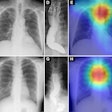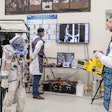Measuring efficiency in the radiology department improves productivity, according to a new study published in the October issue of Journal of the American College of Radiology.
The Mayo Clinic in Scottsdale, AZ, is a 244-bed facility that sees 25,000 patients each year. The radiology department is filmless, with five digital radiography (DR) units, three computed radiography (CR) units, and one fluoroscopy unit; radiology staff also offers support in the operating room, which includes four C-arm fluoroscopes, one gastrointestinal endoscopy-fluoroscopy unit, a pain clinic with two more C-arm fluoroscopes, and four portable computed radiography chest-abdominal units (JACR, October 2010, Vol. 7:10, pp. 774-777).
Contributing author C. Daniel Johnson, MD, and colleagues measured the average times radiology technologists needed to perform the following exams:
Average exam turnaround times
|
The researchers found that the average time spent per examination type ranged from 10 minutes to one hour and 16 minutes. At the beginning of the study, in February 2008, group productivity was at 50%; as the study progressed, productivity increased by a range of 57% to 63%.
General radiologic examination volumes and productivity
|
|||||||||||||||||||||||||||||||||||||||
| Courtesy of the American Roentgen Ray Society and the American College of Radiology. | |||||||||||||||||||||||||||||||||||||||
"During the study period, three positions were vacated and not filled," Johnson and colleagues wrote. "[This] equated to an average yearly savings of $174,000."
In addition, the department moved a half-time staff person from a day shift to a weekend shift to improve after-hours coverage during the course of the study; the effect of this change was an 11% productivity improvement (from 50% to 61%).
Measuring efficiency had the effect of sharpening the department's focus, according to the researchers.
"Improving productivity and maintaining team spirit are often competing priorities that may be difficult to achieve simultaneously," they wrote. "Although productivity in our group was improved by not filling vacancies and by relocating staff members to other shifts, dedicated staffers also were committed to improving their performance numbers after they were surprised by the low baseline productivity measure. Individuals with low productivity scores also were surprised to learn that their peers were working harder than they anticipated, which encouraged some to increase their work pace."
By Kate Madden Yee
AuntMinnie.com staff writer
October 5, 2010
Related Reading
Pay-for-performance incentives cut report turnaround times, August 31, 2010
Want to reduce report turnaround time? Try pay-for-performance, February 9, 2009
Web-based radiology dashboard aids in practice management, December 1, 2008
ED report turnaround times drop with speech recognition, November 19, 2008
Speech recognition shrinks report turnaround time, May 29, 2008
Copyright © 2010 AuntMinnie.com



